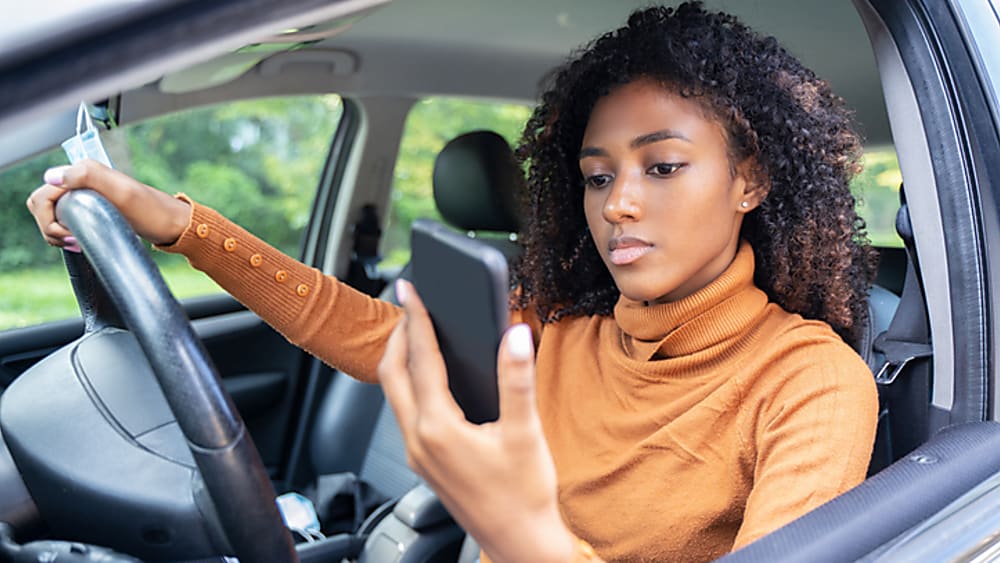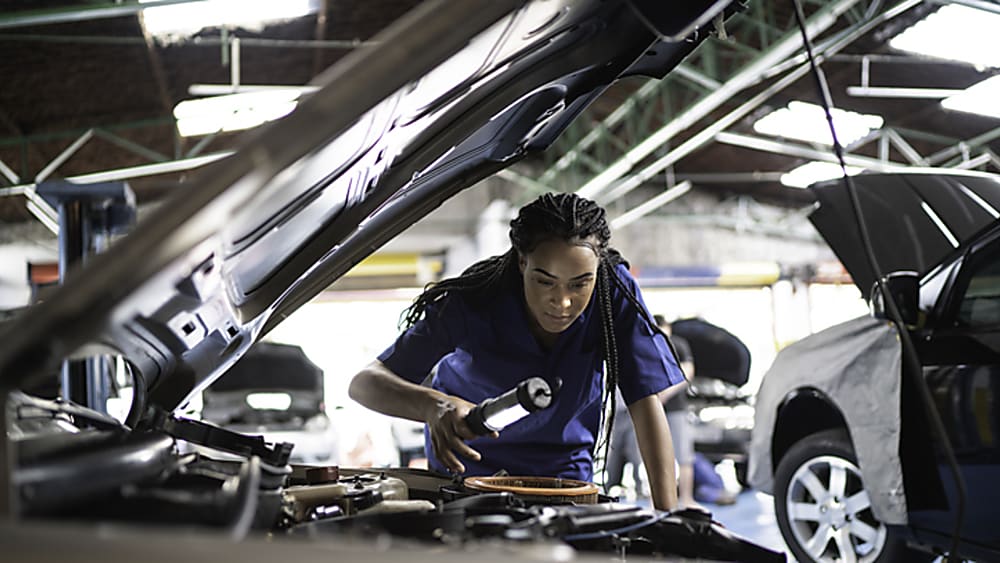Tire maintenance & safety
Safe driving tips for teens and new parents

Best price guarantee
Tire replacement coverage
24/7 roadside assistance
Easy returns
Tire maintenance & safety

The idea of driving with children can be overwhelming, but you need to get used to it since you’re going to be doing it every day for 16 years or more. You’ll drive them home from the hospital, to their first t-ball game, their first sleepover, and their first driving exam.
That’s a lot resting on your shoulders when every move you make counts. Not just because of their immediate safety, but because they’re going to pick up on your driving habits.
That’s why we want to share some driving tips for new parents and parents with teens. We’ll help make sure you not only keep them safe and sound, but you’re shaping another safe driver along the way.
It’s not just for kids. With a baby on board, you want to make sure they’re well-rested before a long journey because an irritated baby can be unruly and distracting. You also need to make sure you’re well-rested before getting behind the wheel to reduce the risk of an accident.
If your teenager has a learner’s permit, make sure you keep tabs on their sleeping habits. Teenagers have a nasty habit of driving while sleep-deprived, which obviously doesn’t mix with inexperience. You shouldn’t hand over the keys to kids that have been skipping curfew.
With a car seat on board, all of your attention will be on making sure they’re strapped in. Don’t forget about yourself, though. Make sure your mirrors and seat are all properly adjusted before you start moving.
The same applies to music and other settings. Get everything set up the way you like it so you can focus on the road. Trying to switch playlists or even messing around with climate control can be dangerous for everyone in the car.
Teach this practice to new drivers as well. They’re bound to fiddle with these adjustments when they jump in the front seat. Doing so while you’re driving can be catastrophic. The sooner they make a habit of it, the better.

Kids and teens have a tendency to overreact to minor setbacks. If the kids start having issues, safely pull over before you try to address it. Attempting to multitask or jolting through traffic to find the next exit can make matters worse.
Teenagers are easily distracted, and you need to help them discipline themselves to follow similar practices. Texts, phone calls, and other matters need to come second to the task at hand when they’re learning to drive.
Having to repair a tire on the side of the road is always dangerous. Perhaps you’re willing to risk it when you’re on your own. Don’t do it with kids in the car. Call the tow truck, then take the vehicle to a safe location to repair it. Be sure to set out road flares or reflectors; this will let other drivers know there’s a vehicle off to the side of the road and help the tow truck find you.
SimpleTip: Be sure to set out road flares or reflectors to let other drivers know there’s a vehicle on the side of the road and to help the tow truck find you.
Make sure your teen has a roadside assistance and insurance plan of their own. You can add them to your plan with a learner’s permit, but they will need their own once they have a driver’s license. Otherwise, they may wind up stranded on the side of the road without help.
Don’t agree to drive kids and their friends if you’re not comfortable doing so. Screaming kids, loud teenagers, and everything that can potentially go wrong will only overwhelm you. Wait until you’re ready before agreeing to take more passengers than you're used to.
Teach new drivers that having friends in the car can be very distracting and can have a direct influence on their decision-making process.
Sixteen years is a long time to drive your kids around. You’re going to make mistakes, and it’s important to admit to it when you do. Your kids will ask what happened, so be honest about any mistakes you made, and don’t try to cover them up. These are learning opportunities that can help them form good driving habits in the future by explaining what you did wrong and how you could do better.

Starting a family is expensive and, at some point or another, you will need to stretch your budget and pass up on the luxuries. Routine maintenance isn’t something you should cut out.
Sure, you might be able to get a few more miles out of those tires, shocks, and brakes, but is it worth the risk? Keeping with your regular maintenance schedule can alert you to future problems or allow you to replace a part of your vehicle before it becomes dangerous.
It’s also important to know what the signs of wear are and how much life is left before you need replacements, so get yourself and your teen familiar with how to check tire tread.
The idea of driving with kids can be overwhelming, but there’s nothing you can do to change the fact that it will happen as a parent. Take a minute whenever you’re feeling the pressure, and remind yourself you’ve been driving for a long time now. That cool-headed state that’s carried you this far is exactly what you need here.
Remember the basics and stick to them: Keep your eyes on the road, hands on the wheel, buckle up for safety, and manage potential distractions accordingly. Most importantly, don’t expect the road to cooperate.
You can put stickers on your car to clarify that babies and student drivers are on board, but you can’t expect road conditions, other drivers, or nature to be forgiving because of it. That’s why you need to take the initiative and make sure that you do things the right way without concern for how everything else is going. Is that any different than driving’s ever been? Not exactly, and you’ve done it fine so far.
We know teaching teens to drive can be as equally fun as it is terrifying. You know that it’s a major moment in their life, but you are handing them a massive responsibility. We might not have the time to talk through the finer points of this subject, but we can say that nobody should rush it.
Only teach a teen to drive when they are truly ready for it. Their learner’s permit doesn’t speak for their ability to comfortably get behind the wheel and manage a vehicle. There’s a lot going on, and they need to have the right mentality before they should do so.
You also need to be patient with them. A teen can be plenty mature enough to start driving, but they will make mistakes. Stopping hard, taking turns suddenly, driving a little too fast, and failing to use turn signals are all things that even experience drivers will do. We’re not saying not to make them aware of these problems, but don’t respond in a way that will make them feel anxious about driving, as that can make things worse.
Our advice is to think back to the person who taught you how to drive. Remember all of the things they did right and what they didn’t. Shape your approach on what you think works best. Just like driving, this really isn’t much different than the parenting you’ve been doing.
There is no way for us to get in the car with you and share this new adventure. That does mean our chapter ends where yours begins. Well, at least when it comes to giving advice on driving habits.
One way we can continue to contribute is by making sure you have the best tires possible on your car. We know you can just use our intuitive website to do it on your own, but we’ve got plenty of team members willing to help out.
Give us a call if you have any tire-related questions. We can talk about your car, location, and weather conditions so that we can track down the perfect set of tires. We’ll also help you pre-book an appointment with a preferred installer in your area.
SimpleTip: Have you ever wondered why you see certain shops for installation on SimpleTire.com? These are trusted shops in your area that are more than capable of servicing most of your automotive needs, including tire installation, rotation, and alignment.
Search By